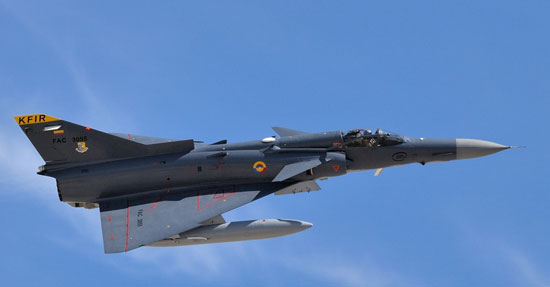
The Colombian Air Force (FAC) has reportedly grounded its entire fleet of Kfir C-10 jet fighters following a crash of one of the aircraft, while performing approach manoeuvers near the Air Combat Command Base No. 1 in Colombia last month, Defensa.com reported.
The aircraft was one of 24 Kfirs built and modernized by Israel Aerospace Industries (IAI).
Preliminary investigation has indicated that the aircraft lost power at low altitude, as the J79-GE J1EQD jet engine suffered ‘flameout’, forcing the pilot to eject. Flameout occurring at higher altitude would enable the pilot few seconds to try and restart the engine, but at low altitude, ejection is the procedure to follow under such conditions.
A flameout refers to the run-down of a jet engine caused by the extinction of the flame in the combustion chamber. It can be caused by a number of factors – some due to pilot error – such as fuel starvation, compressor stall, or insufficient oxygen at high altitudes. Other causes are from foreign object damage (often caused by birds strike at low altitude). Severe inclement weather, cold temperatures and mechanical failures are also probable causes.
The Colombian investigation has ruled out bird air strike hazard (BASH) or an ingestion of birds by the turbojet engine. IAI will inspect the engine to try and understand the cause of the mishap. IAI’s Lahav division has been performing maintenance and repair of the Colombian Kfir engines since their introduction into service. The Colombian Air Force is expected to have 24 Kfir C-10 aircraft in its inventory.
According to Colombian sources J79-GE J1EQD engines are believed to have caused four accidents involving the Kfir TC12/C10, in a series of accidents that claimed the life of one pilot. Two variants of this engine were used to power the McDonnell Douglas F-4E Phantom. While flameout was relatively common, it rarely occurred simultaneously at low altitude, thus providing redundancy at such emergencies.





















